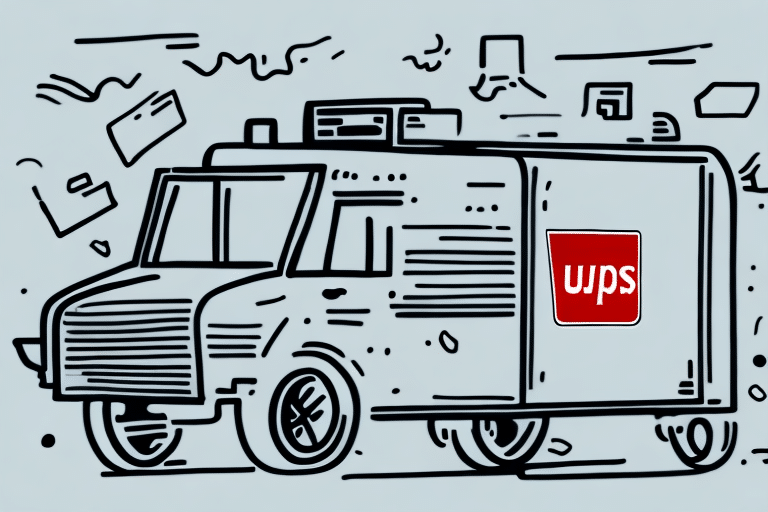Shipping Rates and Cost-Effectiveness
When selecting a delivery service, shipping rates are a primary consideration. USPS generally offers more affordable rates for lightweight packages and provides various flat-rate shipping options, making it ideal for small businesses and individual senders. According to the United States Postal Service, flat-rate boxes can be a cost-effective solution for packages up to 70 pounds.
UPS, while typically more expensive, offers competitive rates for larger or heavier packages. For businesses shipping in bulk, UPS provides discounts and negotiated rates that can enhance cost-effectiveness. According to UPS's shipping guide, their pricing structure is designed to accommodate a wide range of shipping needs.
- USPS: More affordable for lightweight packages, flat-rate options.
- UPS: Competitive for larger/heavier packages, bulk shipping discounts.
Delivery Time and Reliability
Delivery speed and reliability are critical factors in choosing between UPS and USPS. UPS is renowned for its expedited shipping services, offering next-day and two-day delivery options that are particularly beneficial for time-sensitive shipments. According to the Inbound Logistics report, UPS consistently ranks high in on-time delivery performance.
USPS provides reliable standard shipping options, such as Priority Mail, which typically delivers within 1-3 business days. While USPS may take longer for standard deliveries compared to UPS's expedited services, it remains a dependable choice for non-urgent shipments.
- UPS: Faster delivery options, high on-time performance.
- USPS: Reliable standard shipping, suitable for non-urgent packages.
Package Size, Weight, and Shipping Options
Understanding size and weight restrictions is essential for efficient shipping. USPS allows a maximum package weight of 70 pounds and a combined length and girth of 108 inches for most services. This flexibility caters to a variety of package sizes for both domestic and international shipping.
UPS supports larger shipments with a maximum weight limit of 150 pounds for certain services and a length and girth limit of up to 165 inches. Additionally, UPS offers specialized shipping options such as freight shipping and white glove delivery, which are ideal for handling bulky or fragile items.
- USPS: Max 70 lbs, 108 inches girth, flexible for various sizes.
- UPS: Up to 150 lbs, 165 inches girth, specialized shipping services.
Tracking Capabilities and Customer Service
Effective tracking and robust customer service are vital for a smooth shipping experience. UPS provides comprehensive tracking features, including real-time updates and notifications via email or text. Their advanced tracking system allows customers to monitor their shipments closely, enhancing reliability.
USPS offers tracking services as well, though they have improved over the years. While USPS tracking may not be as detailed as UPS's, it still provides necessary updates on package status and estimated delivery dates. According to recent customer surveys, UPS receives higher satisfaction ratings for its customer service compared to USPS.
- UPS: Real-time tracking, proactive notifications, high customer satisfaction.
- USPS: Improved tracking, adequate updates, variable customer service.
International Shipping
For international deliveries, both UPS and USPS offer distinct advantages. UPS excels in global shipping with faster delivery times and extensive tracking capabilities. Their network of international partners and customs expertise ensures smooth cross-border shipments.
USPS is a cost-effective option for international shipping, especially for smaller parcels. However, delivery times may be longer, and tracking can be less comprehensive compared to UPS. According to the USPS International Services, affordable rates are available for various international destinations.
- UPS: Faster international deliveries, extensive tracking, customs expertise.
- USPS: More affordable for small parcels, longer delivery times.
Insurance Coverage and Environmental Impact
Both UPS and USPS offer insurance options to protect shipments, though their offerings differ. UPS provides higher maximum coverage levels, which is beneficial for valuable items, but this comes at a higher cost.
USPS includes standard insurance coverage up to $100 at no extra cost, with the option to purchase additional insurance for more valuable items at a lower rate compared to UPS.
Regarding environmental impact, USPS is considered to have a lower carbon footprint, partly due to its extensive use of electric vehicles and efficient delivery routes. UPS is also committed to sustainability, investing in alternative fuel vehicles and implementing strategies to reduce emissions.
- UPS: Higher insurance coverage, investment in alternative fuels.
- USPS: Standard insurance included, lower carbon footprint with electric vehicles.
User Reviews and Overall Satisfaction
Customer reviews highlight the strengths and weaknesses of both services. UPS consistently receives positive feedback for its reliable tracking, fast delivery, and excellent customer support. According to Trustpilot, UPS maintains a high satisfaction rating among users.
USPS garners mixed reviews, with praise for its affordability and extensive delivery network. However, some customers express frustration over delayed shipments and less responsive customer service. Enhancements in tracking and customer support continue to improve USPS's overall satisfaction.
- UPS: High reliability, positive customer support.
- USPS: Affordable, extensive reach, variable delivery experience.
Conclusion: Choosing the Right Delivery Service for Your Needs
Ultimately, the choice between UPS and USPS hinges on your specific shipping requirements. If you prioritize faster delivery, advanced tracking, and higher reliability for larger or time-sensitive packages, UPS is the optimal choice. On the other hand, if cost-effectiveness for lightweight packages and an extensive delivery network are your primary concerns, USPS serves as the better option.
Consider factors such as package size, delivery speed, tracking needs, and budget to make an informed decision. Evaluating these elements will ensure that you select the delivery service that best aligns with your shipping goals.






















